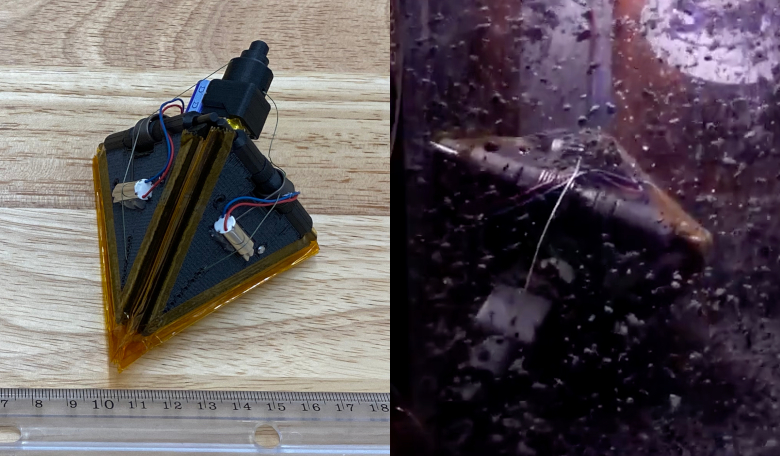Researchers at the Southwest Research Institute (SwRI) are working on a novel approach for collecting samples from an asteroid - a Clockwork Starfish that turns itself inside out to gobble up rocky debris.
The prototype sampling device was tested this week in a low gravity environment during a flight aboard Blue Origin’s New Shepard suborbital rocket, which launched from Van Horn, Texas.
While the machine might look more like a pointed mussel shell in its folded up position, when in action, it mimics the behaviour of a starfish, which feeds by first extending its stomach out of its mouth and over the digestible parts of its prey.
The tetrahedron Clockwork Starfish on the other hand “feeds” by first luring asteroid fragments to its surfaces with magnets.
Most asteroid surfaces are strewn with material that contains magnetic compounds, so the “starfish” is able to attract the rubble with its magnetised panels. It then stores the samples for transport by turning itself entirely inside-out.
“While current asteroid sample return missions visit single asteroids and collect samples from one or two locations on their surface, a future mission carrying dozens of micro-sampler landers like these could return samples from various locations on numerous asteroids,” said SwRI Principal Scientist Dr. Alex Parker, who led development of the Clockwork Starfish device.
“This would be a game-changer for understanding the origin and history of the solar system, as well as providing a valuable glimpse into potential exploration-enabling resources present on these tiny worlds.”
The experiment performed on the New Shepard, which incidentally was the seventh consecutive test flight of this particular rocket booster and the 13th flight for Blue Origin's New Shepard programme, involved placing two Clockwork Starfish inside two separate vacuum sealed containers, with meteorite-like materials.
A small camera placed in each container then recorded how the technology interacts with the materials in low gravity.
“This could offer a simple but robust alternative to other means of sampling small bodies like drilling,” said SwRI Principal Scientist Dr. Dan Durda, the experiment’s principal investigator. “Instead, it could be as easy as bringing a magnet along.”
The Clockwork Starfish is part of a larger project called the Box of Rocks Experiment II (BORE II) that first began in 2016.
The initial experiment (BORE) was designed as a simple, no-moving-parts experiment to study the settling effects of regolith, as very little is known about the low-gravity geological processes on the surfaces of small bodies, explained Durda at the time.
The improved BORE II experiment built upon on the project, by using materials that are much closer in composition and texture to actual meteorites.
A mesmerising clip of the "Starfish" at work can be found here:











